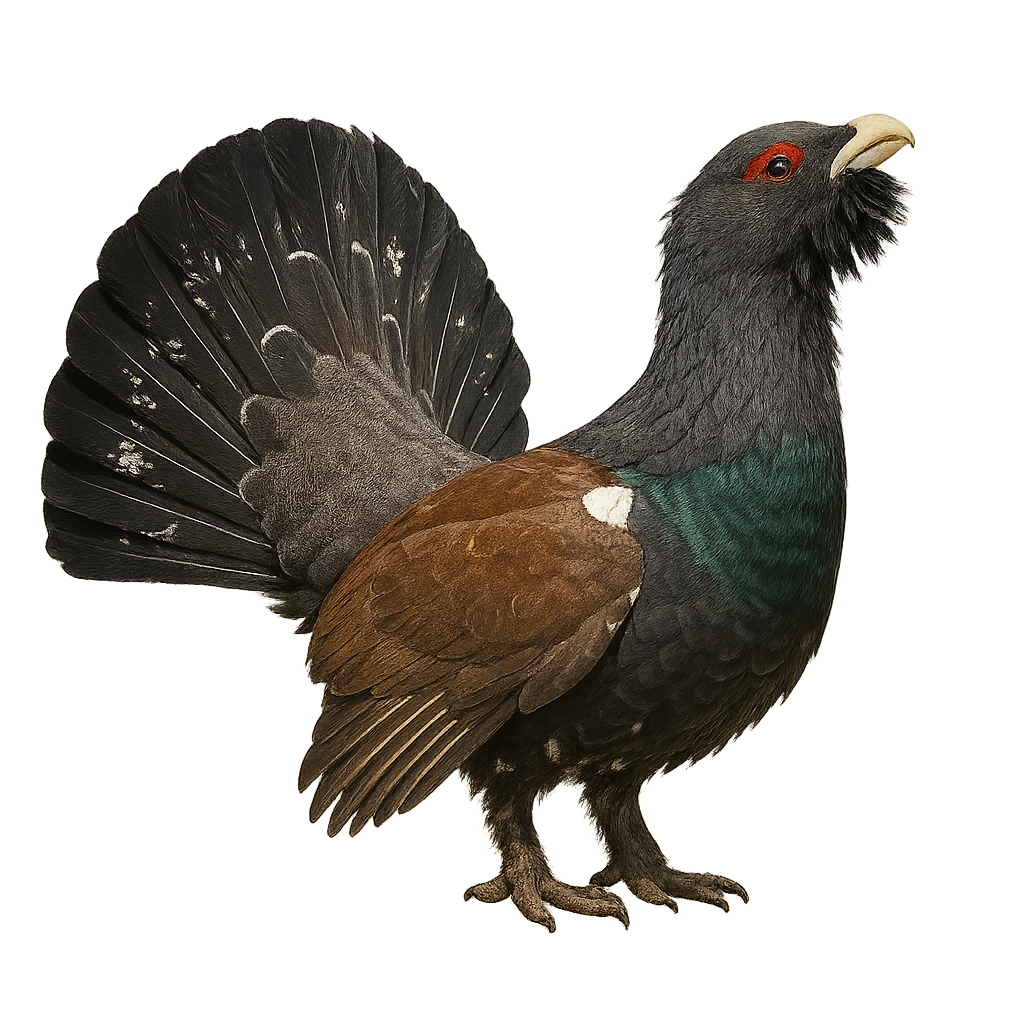Observe and photograph a species in its natural habitat
Learn where and when to observe a species in the wild, how to recognize it in the field, and what habitats it lives in. Get photography tips adapted to its behavior and capture stunning images without disturbing the animal. For full details, open the complete profile in the WildlifePhotographer app.
Western capercaillie
Scientific name: Tetrao urogallus

IUCN Status: Vulnerable
Family: PHASIANIDAE
Group: Birds
Shyness: Very shy
Safe distance: 40 m
Breeding season / Courtship: 01.04-30.04
Gestation: 25 à 28 jours
Births: 20.05-22.06
Habitat:
Coniferous forests and mountains
Description:
The Capercaillie is a large bird of the pheasant family, easily recognizable by its imposing size and distinctive plumage. It measures about 80 cm in length, with a wingspan of 1.2 meters and a weight ranging from 3 to 6 kg for males and 2 to 3 kg for females. The male's plumage is dark, with a reddish chest, a crest of feathers on the head, and a large V-shaped tail. The female, on the other hand, is more discreet, with a brown mottled plumage that allows her to better blend into the environment. The Capercaillie primarily inhabits coniferous and deciduous forests, particularly in the mountains and wooded areas of Europe, notably in France, Switzerland, Germany, and other mountainous regions. It feeds mainly on young shoots, seeds, fruits, and insects. This bird is also known for its spectacular mating displays, during which the male puffs up his chest, spreads his tail, and makes powerful calls to attract females. Although the species is not immediately endangered, the Capercaillie faces threats from deforestation, human disturbance, and habitat loss.
Recommended lens:
>=300 mm
Photography tips:
Use a telephoto lens to photograph from a distance, respecting the species' discreet nature.
Photograph early in the morning or late in the afternoon when soft light highlights the male’s plumage during his courtship displays.
Look for him in conifer forests or mountainous wooded areas, especially in dense pine forests and heathlands.
Be patient and discreet to avoid disturbing his natural behavior.
IUCN status: Near Threatened. Respect his habitat and minimize disturbance, especially during the breeding season.
Ready to take action?
Choose your platform and start your free trial today



